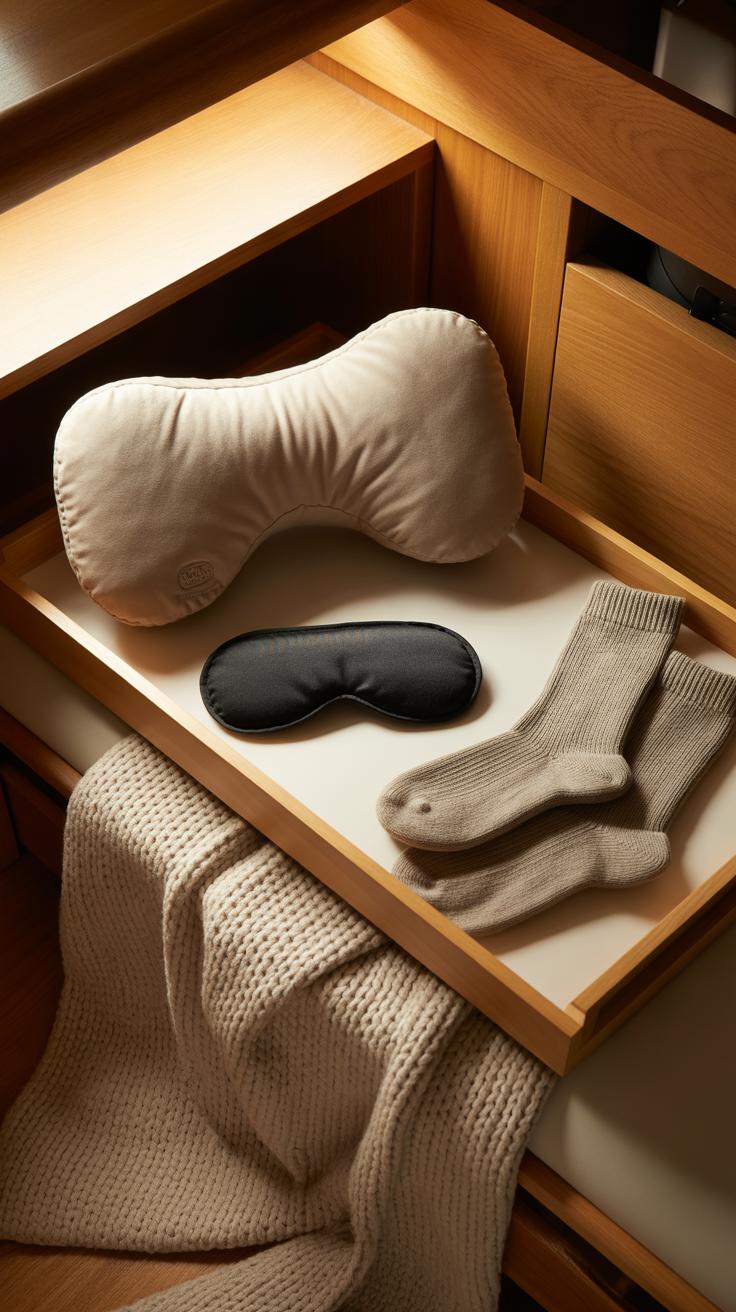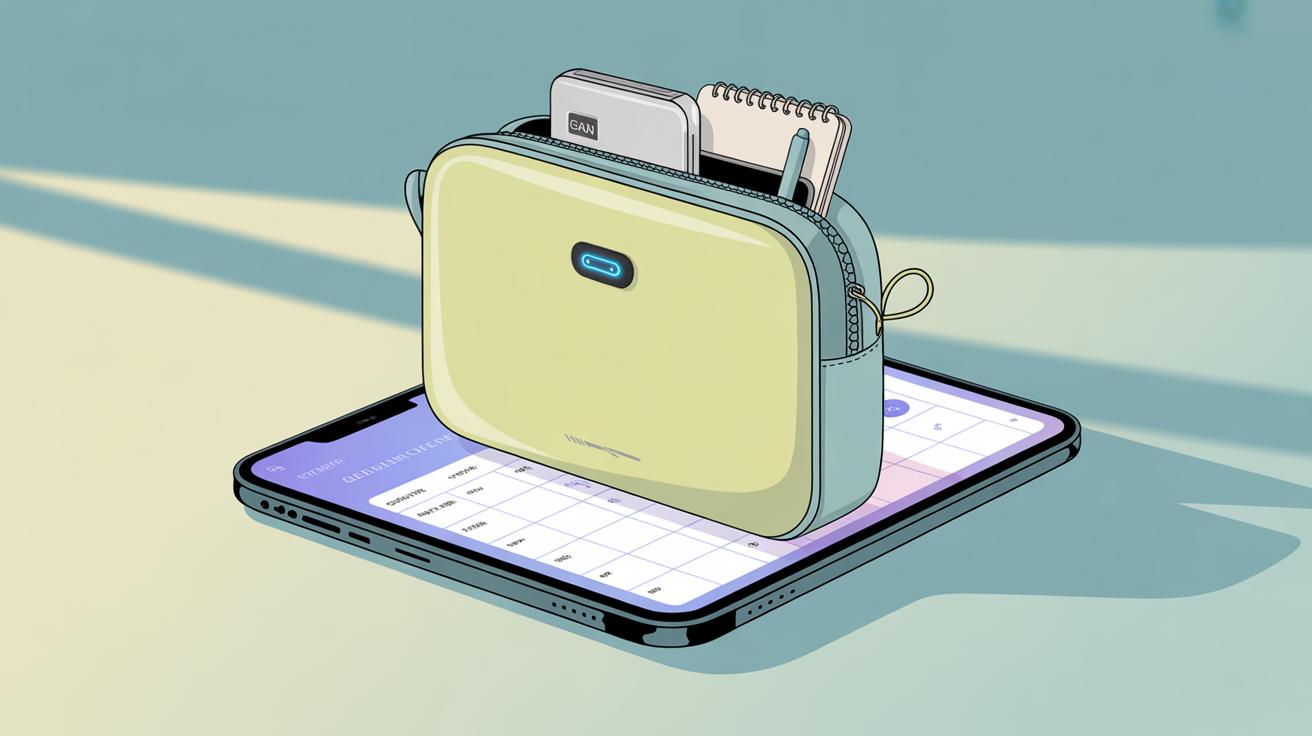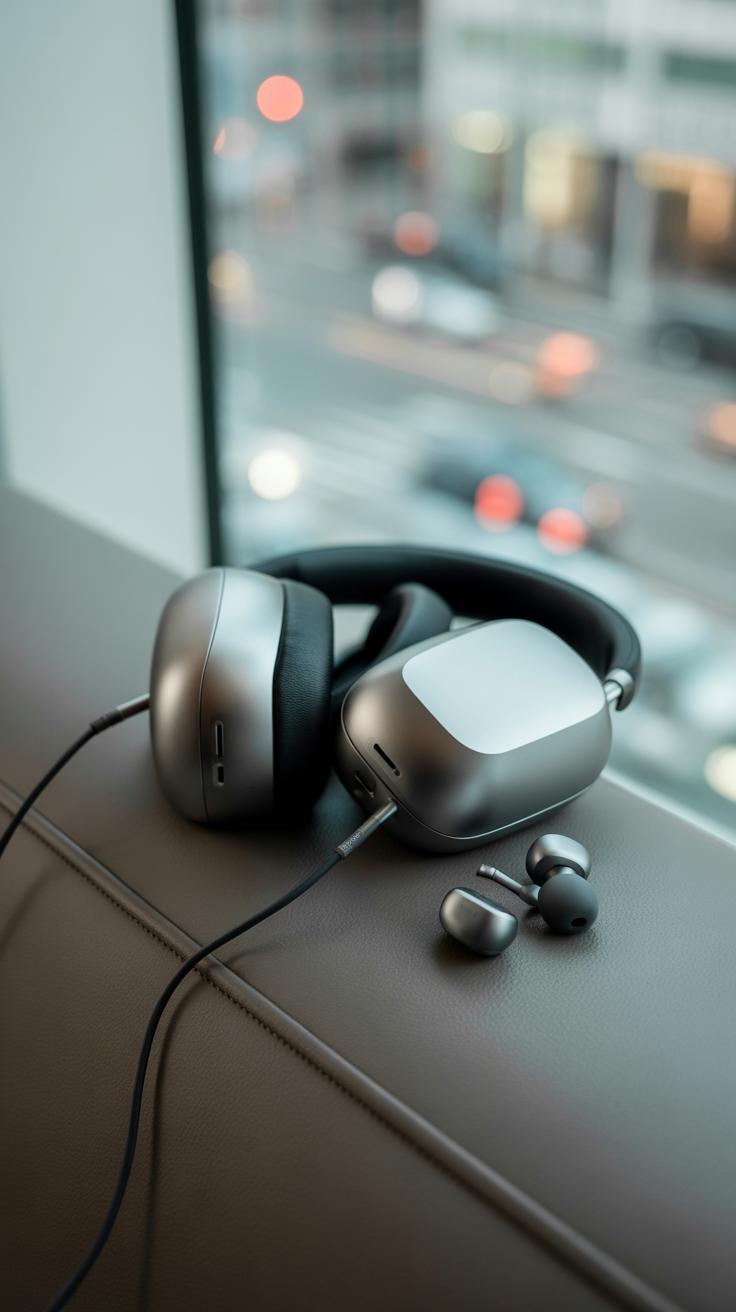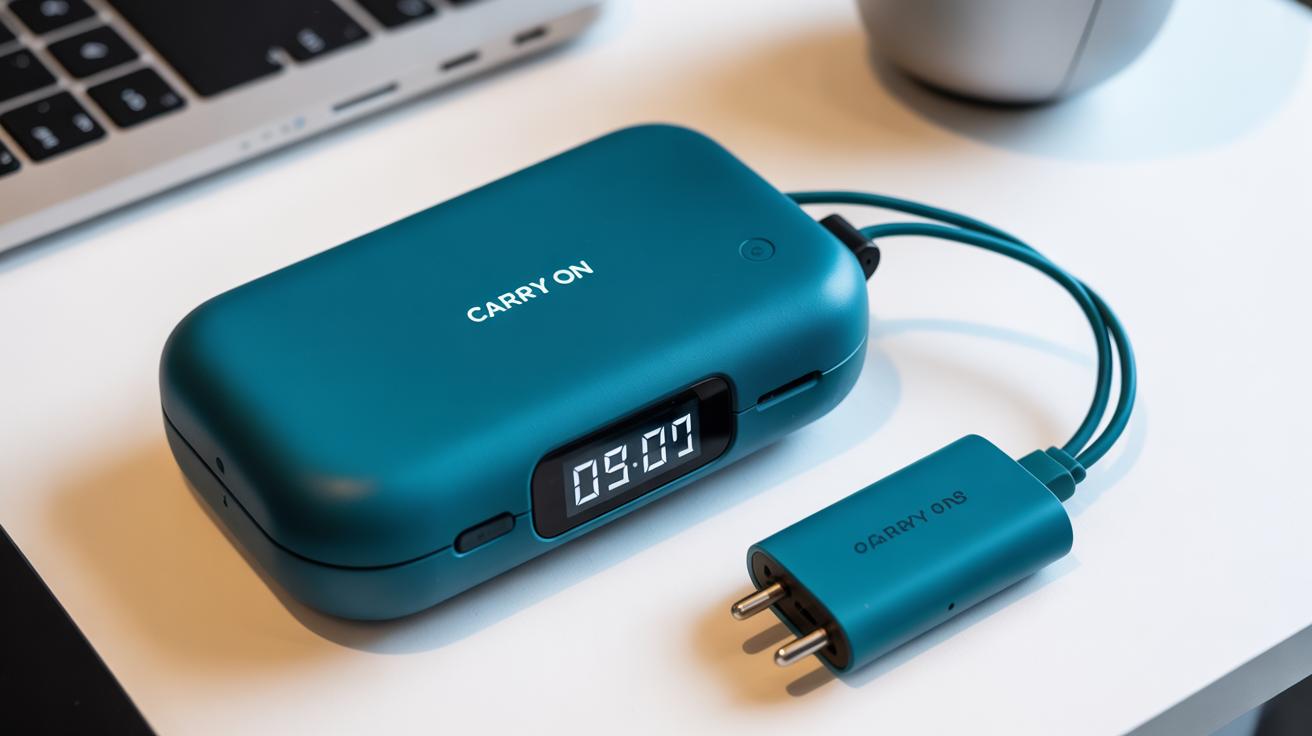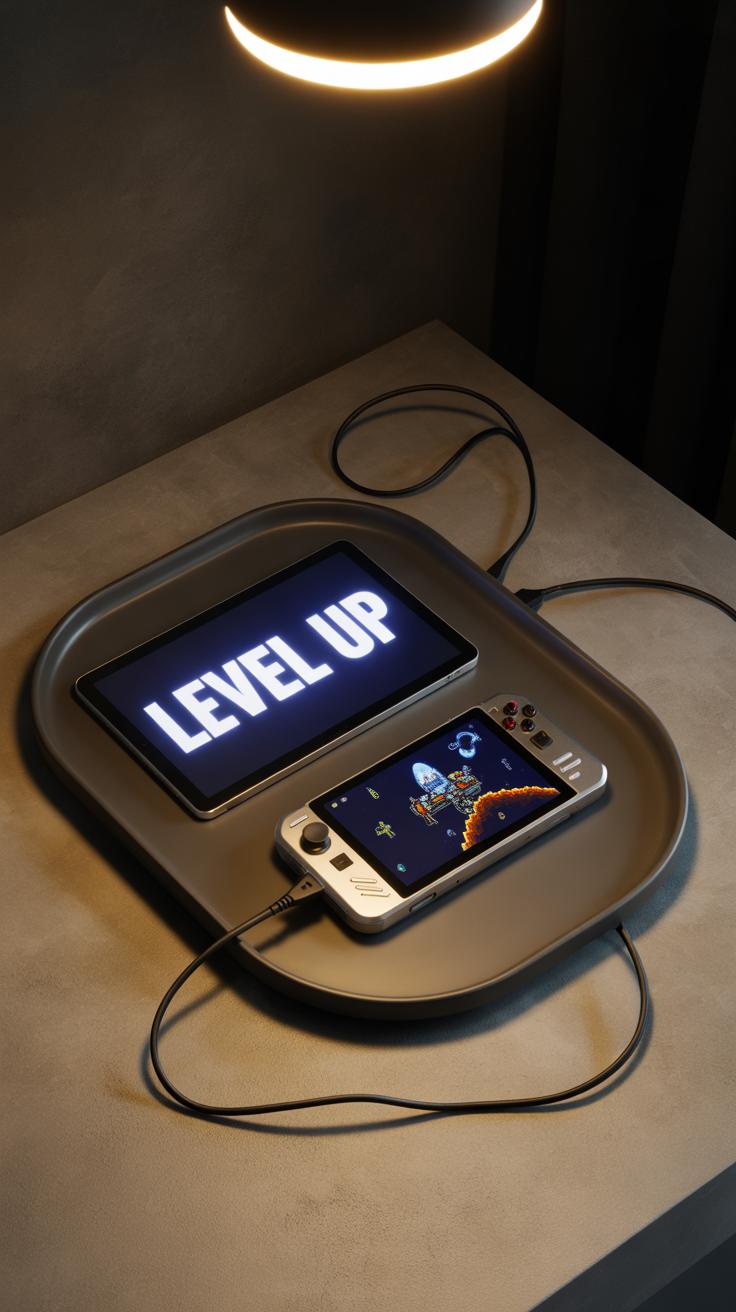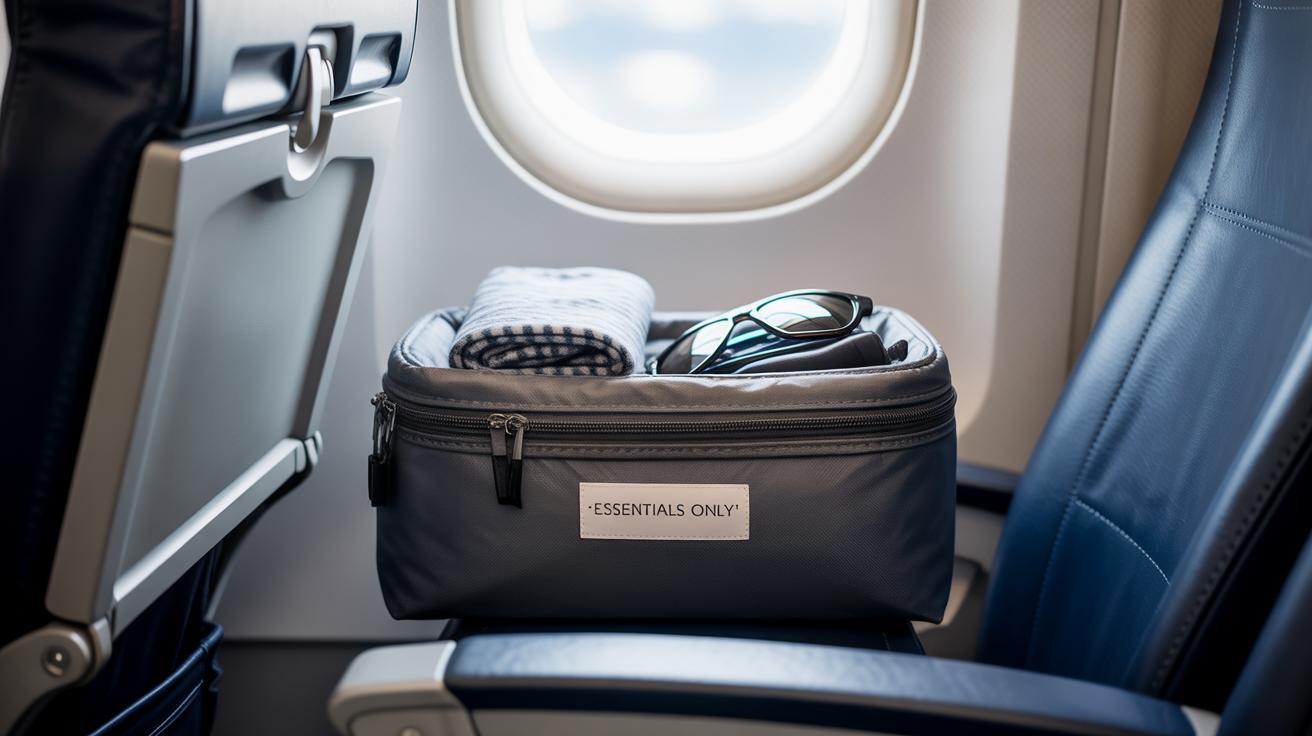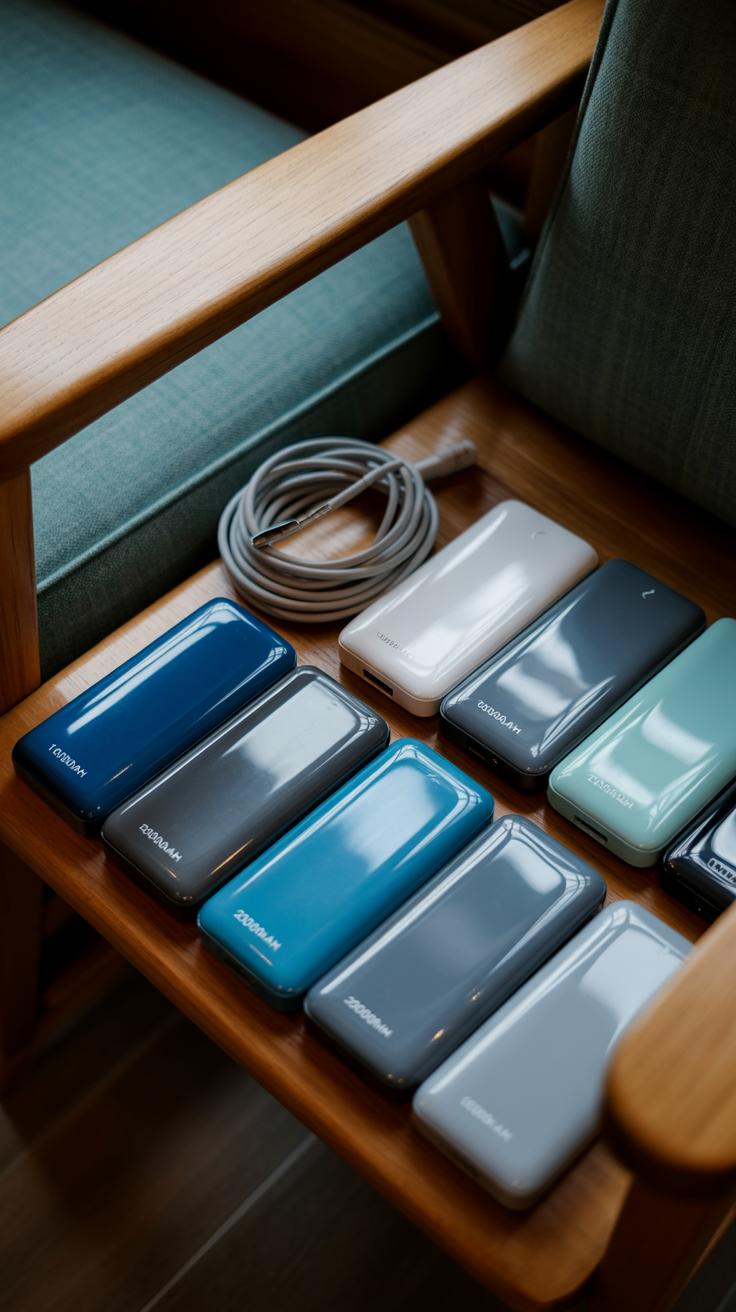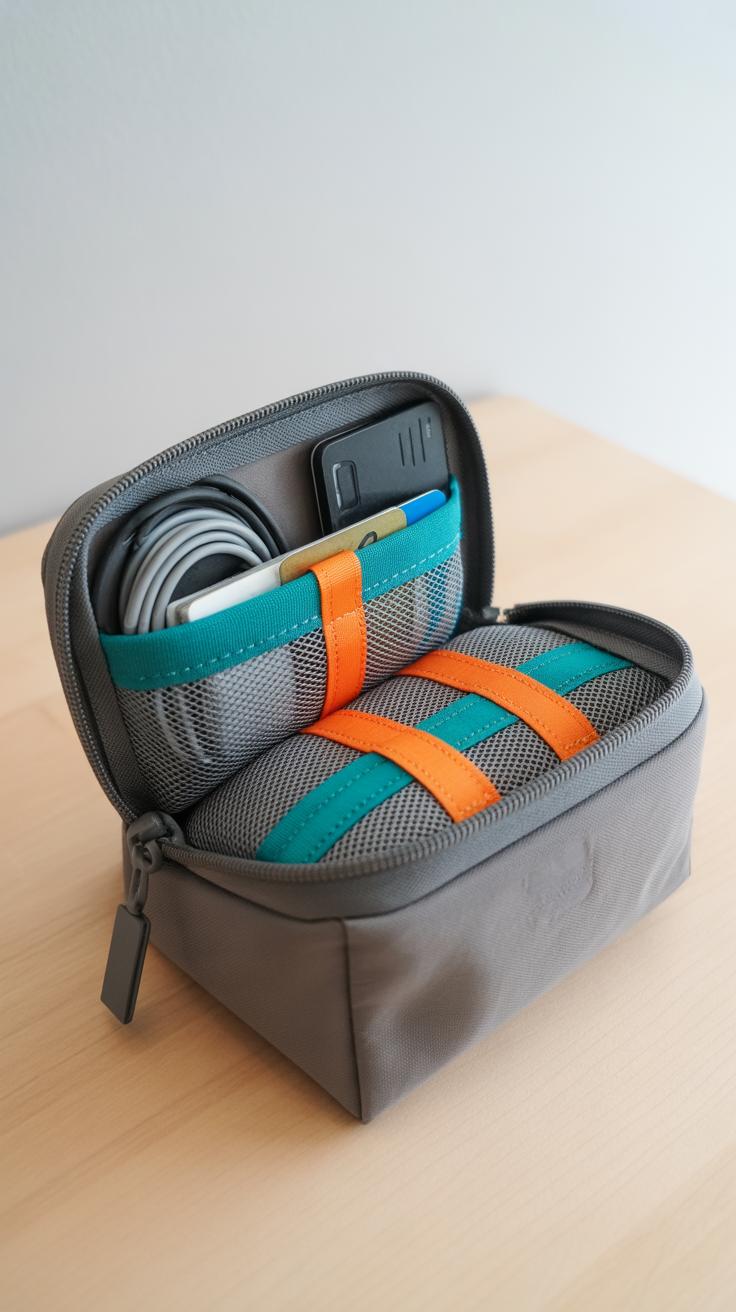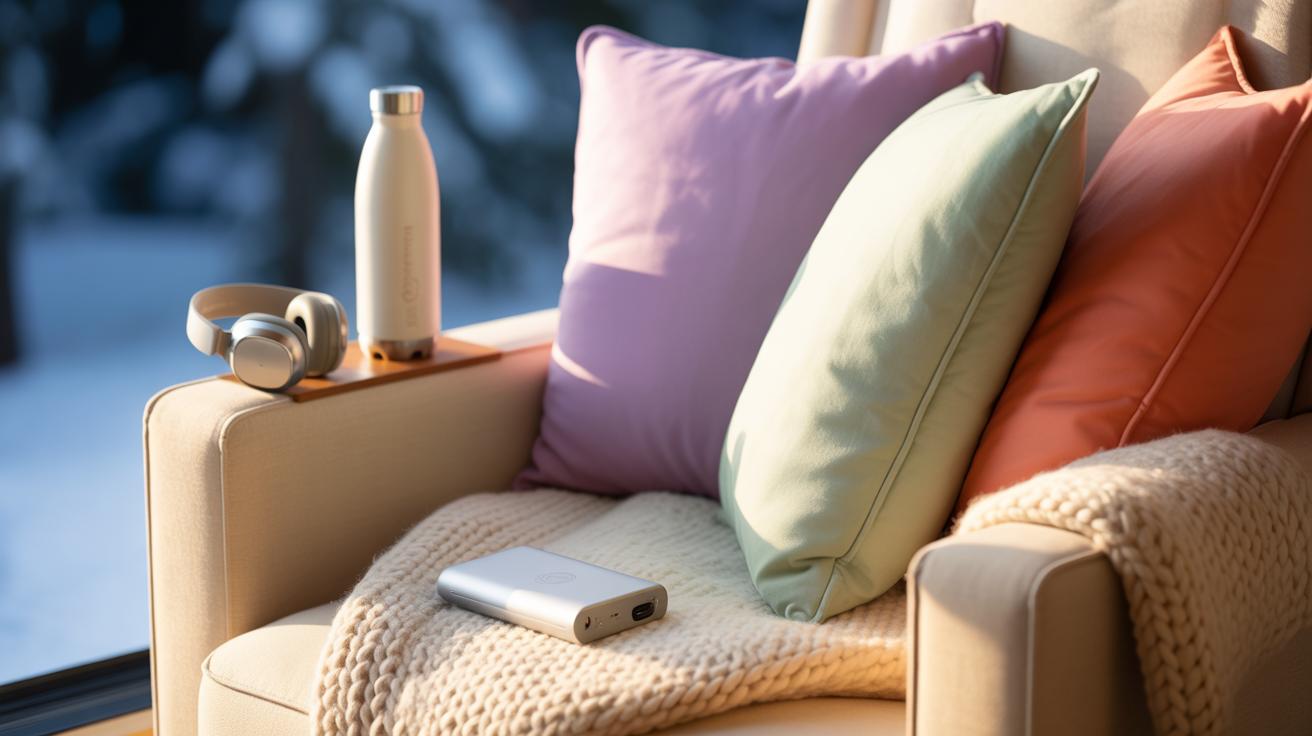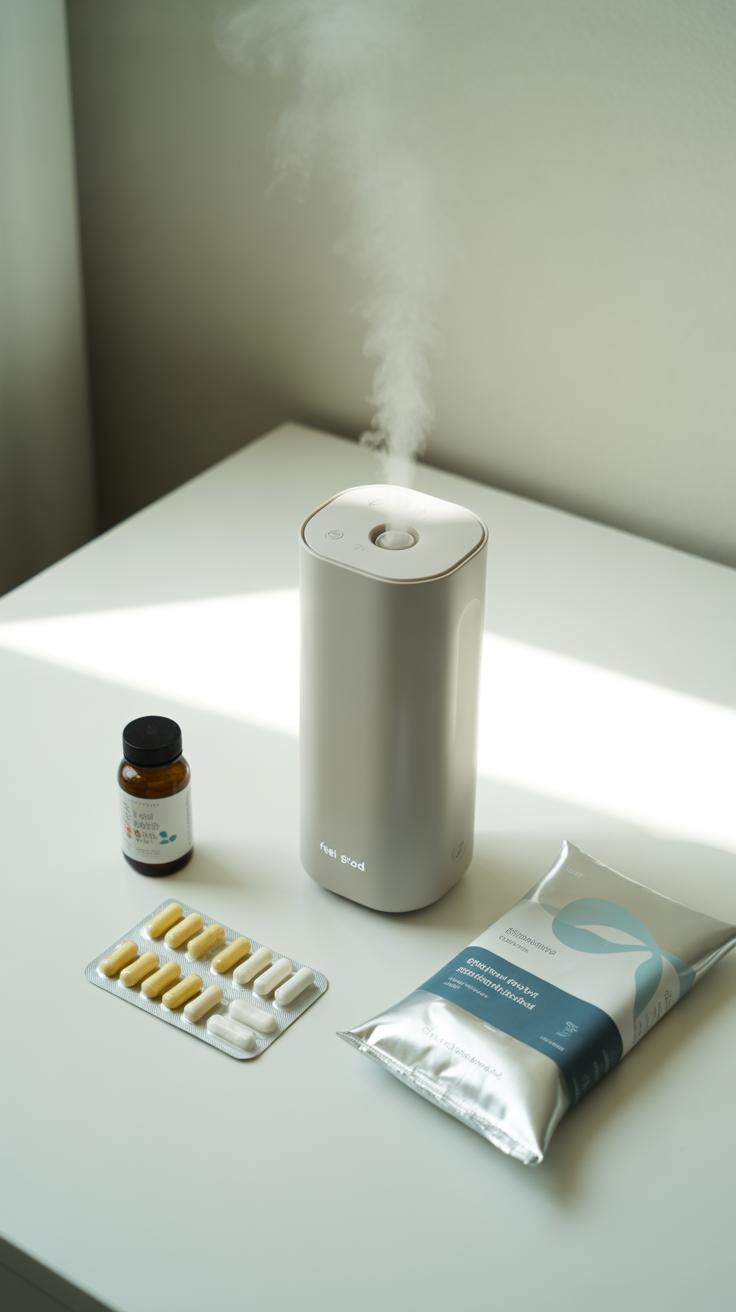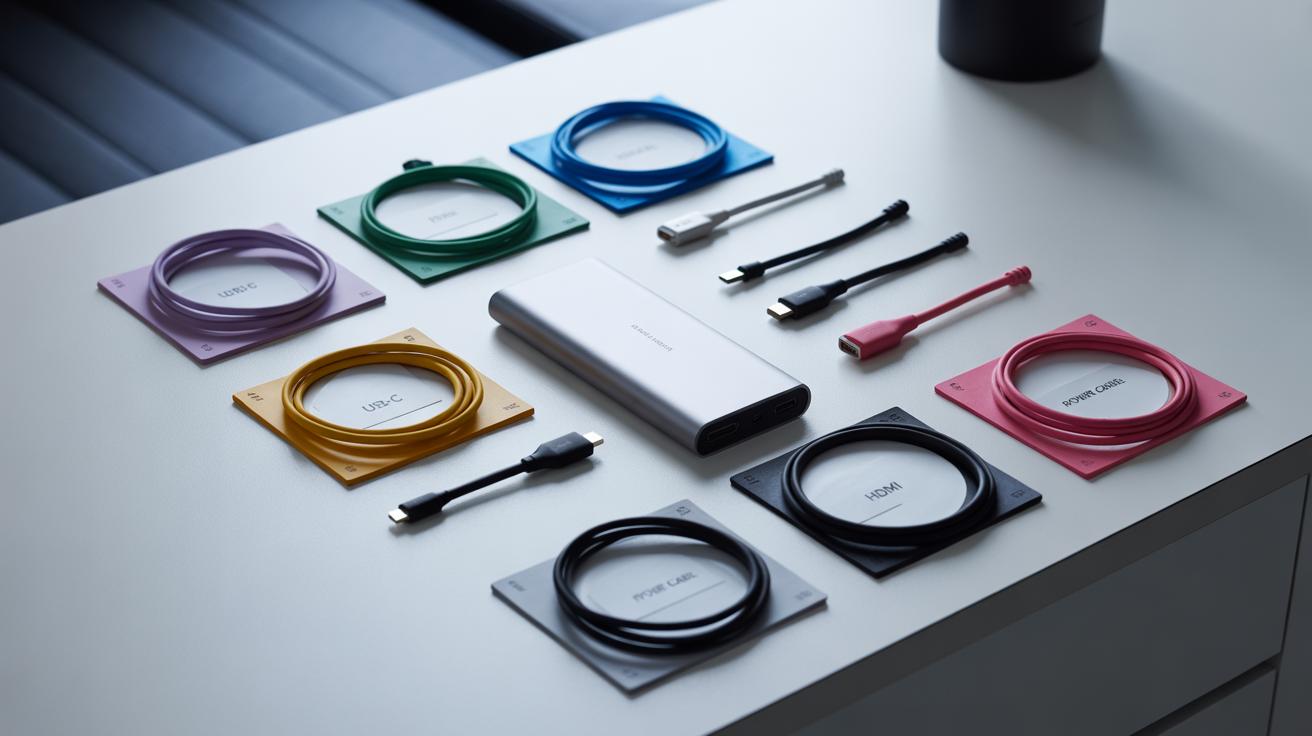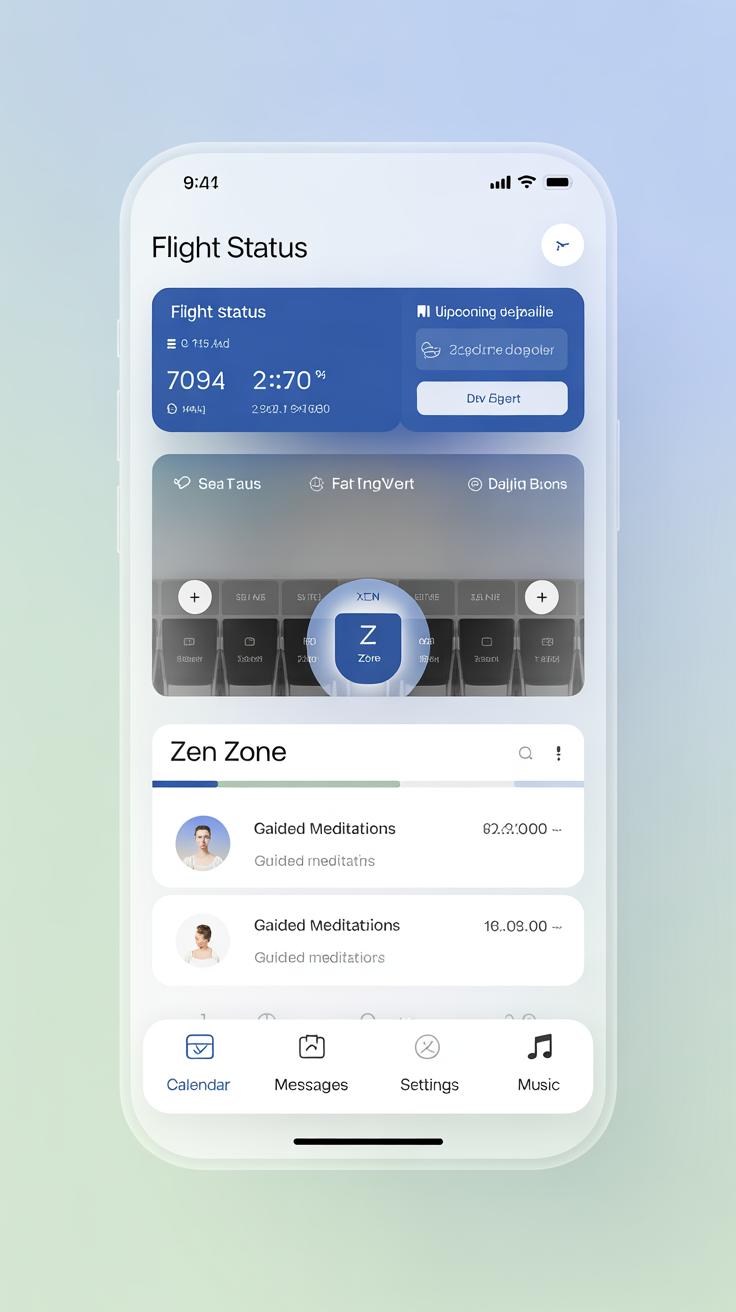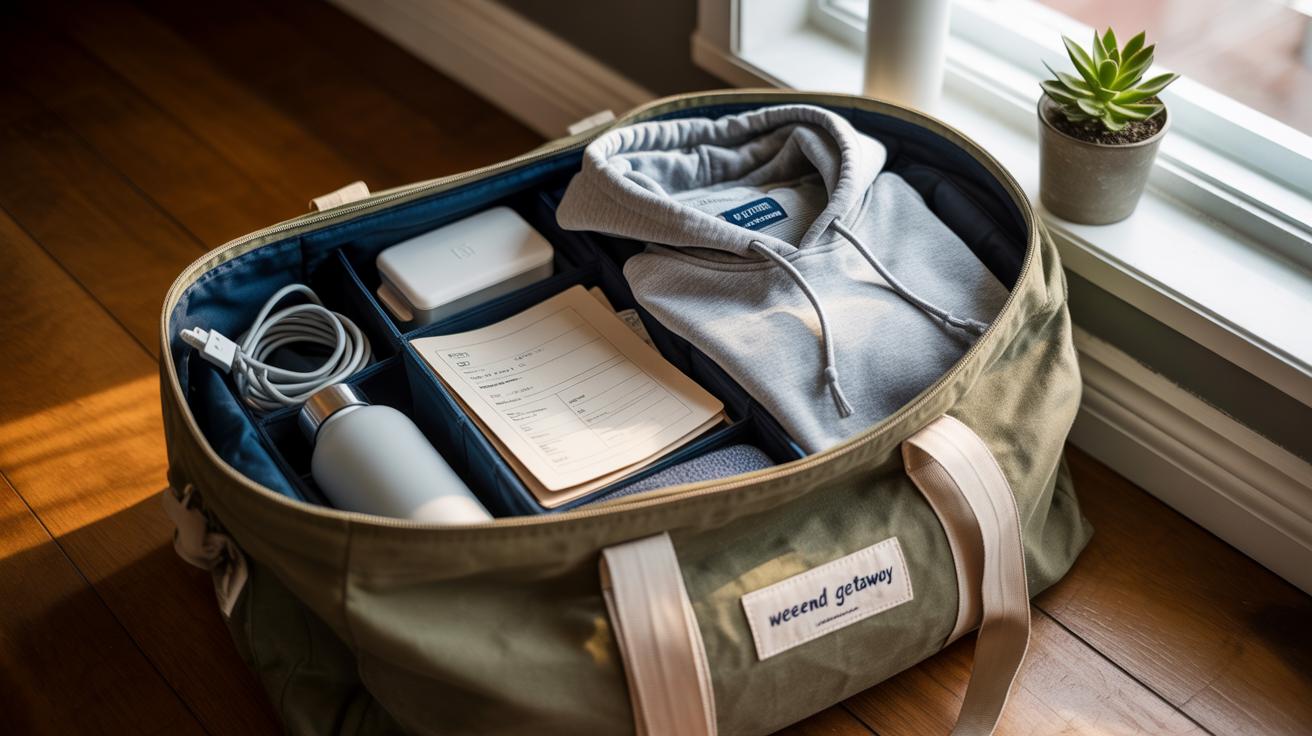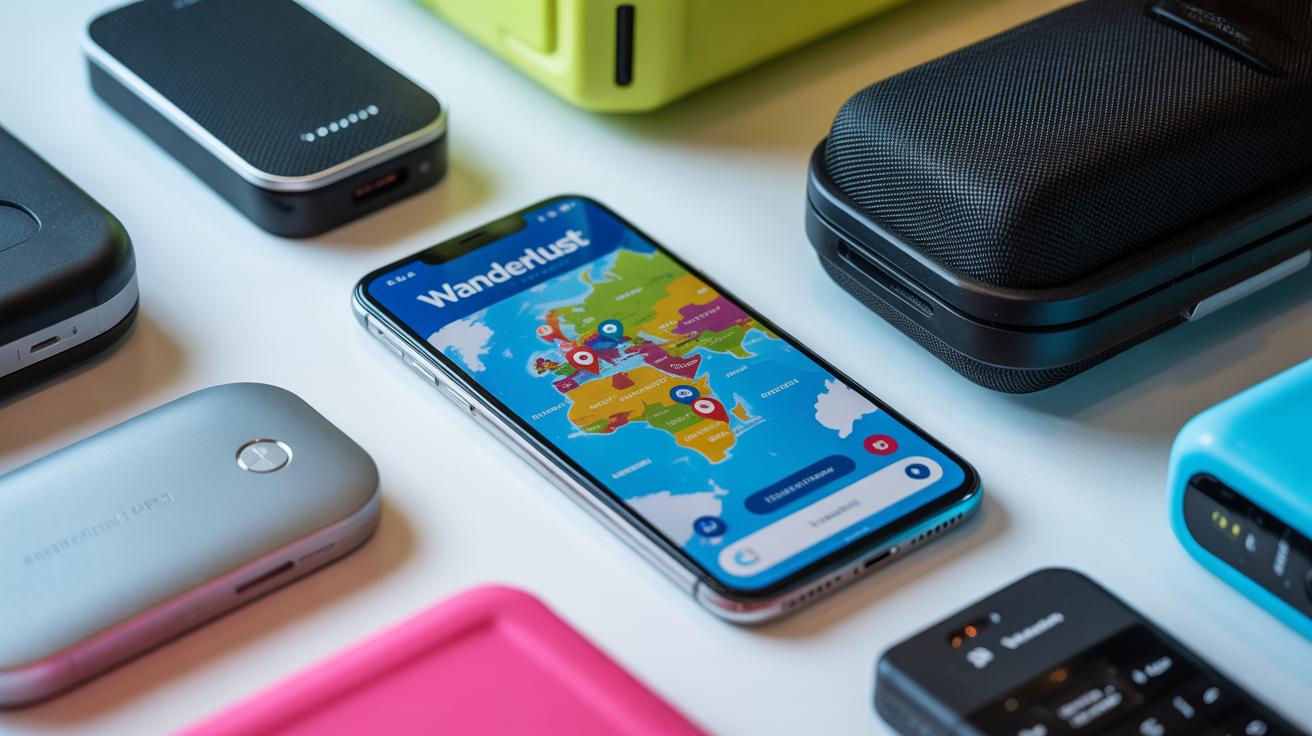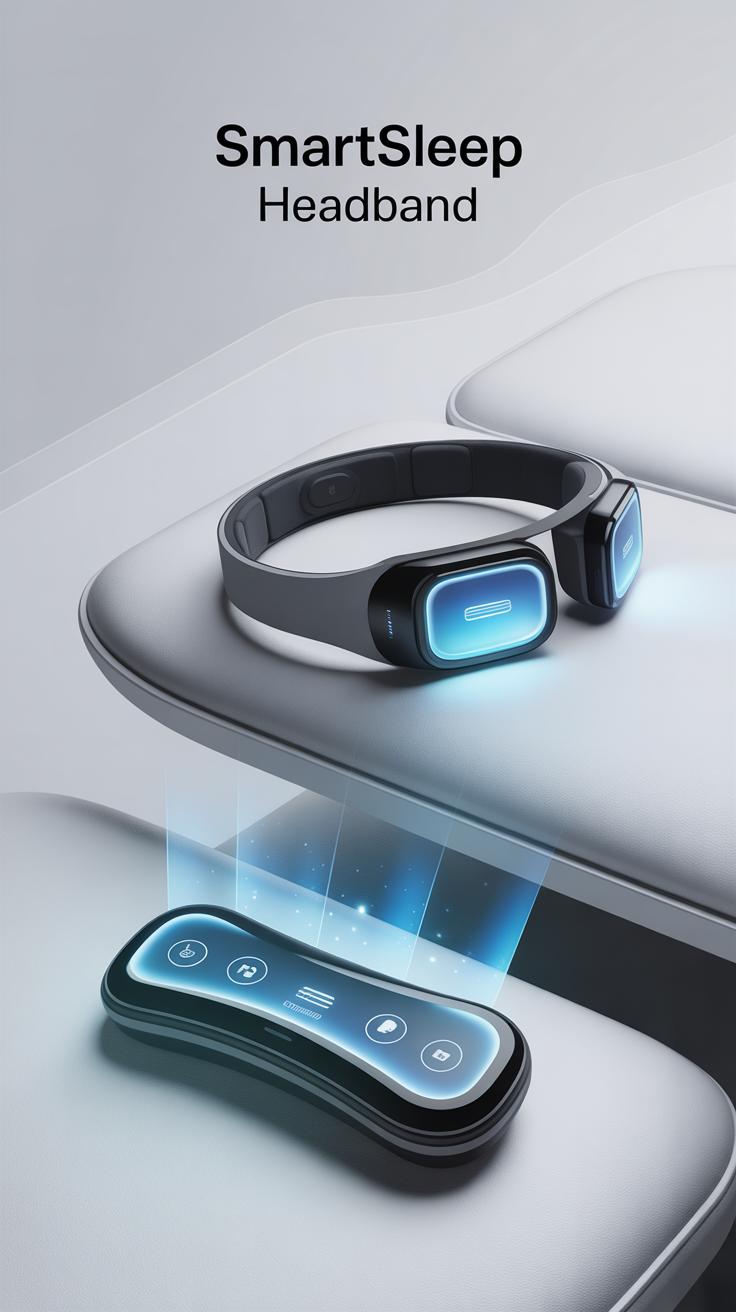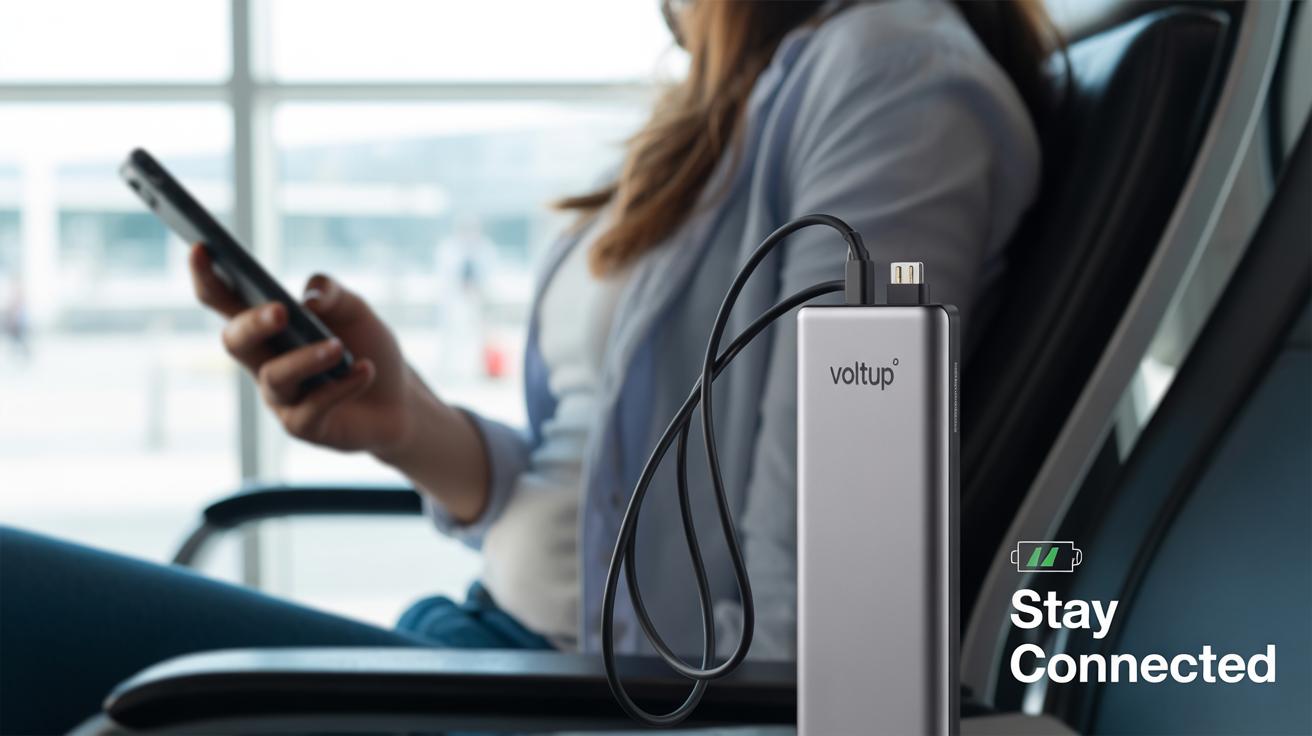Introduction
Long haul flights can be tiring and uncomfortable, but the right gadgets can change your travel experience. Cool new gadgets for long haul flights are designed to boost your comfort, entertainment, and convenience. These devices can help you relax, stay entertained, and arrive feeling refreshed.
This article explores a variety of gadgets that you can bring on your next long flight. From noise-canceling headphones to smart travel pillows, we’ll cover useful tech that fits easily into your carry-on and provides practical benefits. Whether you want to block noise, keep your devices charged, or enjoy movies and books, these gadgets offer simple ways to improve your journey.
Comfort Gadgets for Long Flights
When it comes to beating discomfort on long haul flights, nothing quite beats a good travel pillow. But not all pillows are created equal. Some support your neck with memory foam that molds to your shape, while others use inflatable designs that you can adjust to your liking—though inflatable ones sometimes lose a bit of air over time, which can get frustrating. If you’re someone who struggles with back pain, there are even lumbar cushions that strap to your seat or rest behind your lower back, giving you that extra support you didn’t realize you needed.
Eye masks, while simple, can make a surprising difference. You might think any mask will do, but some come with contoured designs that keep pressure off your eyes, or even built-in cooling gel inserts to reduce puffiness. I once tried a heated eye mask on a long flight; it was oddly soothing, though not for everyone. It made me wonder if a little warmth helps relax muscles or just distracts you from the noise.
Speaking of warmth, heated blankets designed for travel aren’t just bulky airport relics anymore. There are lightweight options powered by small batteries, perfect for those icy cabin temperatures. And if heat isn’t your preference, portable personal fans could help. Small USB-powered fans clip on your tray table or seatback, giving you control over airflow without bothering your neighbors.
Comfort on a plane isn’t a one-size-fits-all. Sometimes, it’s about trying different gadgets and seeing what actually works for you—your neck, your temperature sensitivity, even the way you like to block out light. It’s worth having a small arsenal ready for your next long haul journey.
Noise Cancelling Headphones and Earbuds
Long haul flights come with a steady hum – engine noise, cabin chatter, clinking dishes. It’s hard to relax when it’s all around you, wearing you down bit by bit. This is where noise cancelling headphones and earbuds come in. They don’t just block sound like regular headphones; they actively reduce it, shaping your personal quiet zone amidst the airplane’s roar. I’ve found that slipping them on feels like flipping a switch—suddenly, the world quiets, and you can actually breathe easier or drift off without interruption.
How Noise Cancelling Works
The tech behind noise cancelling is quite interesting—and maybe a little clever. Inside the headphones, tiny microphones pick up the surrounding noise, then the device produces sound waves that are the exact opposite. These “anti-noise” waves cancel out the unwanted sounds before they reach your ear. This process, called active noise cancellation, lowers the drone of engines and ambient cabin noise, making it far easier to focus or relax. For travelers, the benefits go beyond comfort: less noise means less stress, and possibly even less jet lag—though that part might feel subjective depending on the flight.
Choosing the Right Headphones
Picking noise cancelling headphones for a long flight isn’t simply about the brand or price. Comfort should top your checklist. Over-ear designs with soft padding tend to work well for long sessions, but they can get warm after a while. Meanwhile, earbuds are lighter and less intrusive, but fit and battery life vary widely. Consider these factors:
- Battery life—can they last the whole flight?
- Comfort—will they hurt your ears or head after hours?
- Sound quality—do they balance noise reduction with clear audio?
- Portability—are they easy to carry around?
Trying headphones in a store might not replicate the cabin environment exactly, but it gives a sense of fit. Some people swear by a particular model they’ve tested on a few flights, while others change depending on how tired or cramped they feel. It’s a bit of trial and error, really, but your ears will thank you if you get it right.
Portable Entertainment Devices
Tablets and E-Readers
Tablets and e-readers have become staples for long-haul flights, giving you plenty of options to pass the time. Tablets, with their vibrant screens, let you watch movies, stream shows you’ve downloaded, or dive into all sorts of apps—be it drawing, puzzles, or learning a new language. The versatility is something I’ve come to appreciate on those flights where in-flight screens just aren’t cutting it.
E-readers, on the other hand, shine when it comes to reading without screen glare or battery anxiety dragging you down. They feel lighter in the hand, and their battery life can stretch for weeks—meaning, you won’t have to fuss with charging ports on the plane. If you love losing yourself in a good story or catching up on articles, they make a subtle but noticeable difference in your comfort.
Handheld Gaming Consoles
Handheld gaming consoles are a slightly different breed but just as useful when it comes to flight entertainment. The appeal lies in their focus—dedicated devices purely for gaming, without the distractions of notifications or apps pulling you away. They offer a break from screen fatigue too, thanks to their tactile controls and stylized interfaces. You might wonder if it’s worth carrying yet another gadget, but for many, those immersive gaming sessions make time move faster.
Plus, with so many indie games and classics available, you can customize your experience more than on most tablets or phones. If at any point boredom creeps in, a quick puzzle or an epic adventure can snap you right out of it. Still, the choice comes down to what entertains you most—sometimes, a game cartridge beats streaming a movie, at least for me.
Portable Chargers and Battery Packs
Long flights often mean long hours without easy access to power outlets. That’s where portable chargers and battery packs come in—keeping your phone, tablet, or e-reader alive when you need them most. Without a reliable power source, those gadgets meant to entertain you or help you work can quickly turn into expensive paperweights.
When picking a portable charger, compatibility is key. You want one with the right output voltage and connectors for your devices—USB-C is becoming more common, but older devices might still need USB-A or even lightning cables. Don’t forget about airline rules either: many airlines limit battery capacity to around 100Wh. So, a huge power bank might seem tempting but could be banned or require special approval. Checking the mAh and watt-hour ratings before packing is a small step that saves hassles later.
Charging on the move also has its quirks. You might not get a chance to fully recharge your power bank between flights. One trick is to top off your charger whenever you find a seat with a USB port or during layovers in airport lounges—sometimes even quick bursts help. Also, avoid charging multiple devices at once if your power bank output is low; spreading the charge tends to work better over time. Thoughtful planning here can keep your devices ready right through a long journey, even if it feels like a bit of a game.
Smart Travel Organizers
Keeping your travel accessories and devices organized during long haul flights can be surprisingly tricky. You want quick access, but at the same time, avoiding the mess that usually comes from tossing everything in a single pouch is a challenge. That’s where smart travel organizers step in. These gadgets are designed to keep cables, chargers, earbuds, and other tech bits neatly arranged and easy to grab when needed.
Packing Cubes and Tech Cases
Packing cubes are not just for clothes anymore. They now come in sizes and designs tailored for gadgets and accessories. Imagine slipping your chargers and adapters into a small cube separate from your clothes. It prevents scratches and tangles altogether. Tech cases, on the other hand, bring a more structured option. With dedicated compartments for each item — USB sticks, power banks, or memory cards — these cases offer protection and order. I’ve found that using a compact tech case means no more rummaging during turbulent passes. Still, sometimes a bulky case adds weight, so choosing the right size is key.
Cable Management Tools
Cables and earphones can be a nightmare to manage. Untangling them mid-flight? Nobody wants that. Simple gadgets like magnetic cable ties or small winding reels help keep your cords in check. Some travelers swear by silicone cable clips that snap cables quickly or even pouches with separate slots for each cord type. You might wonder if these tools overcomplicate things, but once you try them, it’s hard to go back. Though you have to remember to bring these organizers along, or else it defeats the whole purpose, right?
Health and Wellness Gadgets for Flights
Portable Air Purifiers
Airplanes aren’t exactly known for their fresh air, are they? That’s where portable air purifiers come in. These little devices sit quietly by your seat, filtering out dust, allergens, and some germs from the recycled cabin air. They use HEPA filters or ionizers to clean the air directly around you. Some models are small enough to clip onto the tray table or fit into your carry-on without adding bulk.
I tried one recently, and it did seem to clear the stuffiness a bit, though I’m not sure how much it fights viruses mid-flight. Still, if you’re sensitive to airborne irritants or just want a tiny bubble of cleaner air, these can help make the hours more bearable. Just keep in mind — they might hum softly, so if you’re a light sleeper, that’s something to watch for.
Hydration and Movement Aids
Staying hydrated is easier said than done on long flights. Some gadgets now give you gentle reminders to drink water regularly—small devices that sync with your phone or work independently, vibrating or lighting up at intervals. It’s like having a subtle nudge so you don’t forget amid entertainment and naps.
Beyond hydration, there are wearables designed to promote circulation. For example, smart foot wraps or ankle bands that gently massage or stimulate movement to reduce swelling. Some gadgets even prompt you to take brief stretching breaks through alerts, encouraging better blood flow during long periods of sitting.
Do these devices actually boost comfort? Maybe a bit. But the real test is whether you remember to use them consistently, which—let’s face it—can be tricky when you’re caught up in a movie or work. Still, if you want to try, these gadgets make that little effort easier and less annoying.
Useful Apps and Digital Tools
Flight and Travel Apps
When you’re stuck on a long haul flight, getting real-time updates about your trip can make all the difference. Apps like FlightAware and FlightRadar24 give you live flight tracking, showing your plane’s progress and estimated arrival times. It’s not just about curiosity—these tools help you plan airport transfers or quickly adjust if delays occur. Sometimes, though, the information feels a little too detailed, almost overwhelming, especially if you just want a simple update.
There are also apps focused on gate info and airport navigation—GateGuru is one such example. It offers tips on lounges, food options, and even airport Wi-Fi quality. I remember once barely making my connecting flight because I trusted an app—turns out the gate had switched at the last minute, and the app hadn’t updated fast enough. So, a bit of caution helps.
Most travel apps also add extras, like packing checklists or currency converters. These might not seem crucial mid-flight, but they can reduce stress before you even head to the airport. Sometimes having these little digital helpers feels like having a travel buddy in your pocket.
Language and Communication Tools
Flying internationally often means crossing language barriers. Translation apps like Google Translate or iTranslate do a decent job of breaking down basic communication walls. What’s interesting is the voice recognition feature—speaking into your phone and hearing an instant translation sounds almost too convenient. Yet, it occasionally mistranslates phrases or misses context, which can lead to awkward moments.
Some apps now offer offline translation packs. This is a lifesaver when you don’t want to rely on airport Wi-Fi or roaming data. I’ve used offline mode in a few countries, and while it’s not perfect, it usually conveys enough meaning to get by.
For messaging and calling abroad, apps like WhatsApp or Signal let you stay connected without steep roaming charges. They also support multimedia sharing if you want to send pictures or documents quickly—definitely useful for both fun and emergencies. Still, they depend on internet access, which can be scarce in certain airports or lounges.
So, these apps aren’t foolproof. But if you prepare well and use them as handy tools—not magic solutions—they can ease many travel headaches and make your journey a touch more comfortable.
Future Gadgets for Long Haul Flights
Wearable Tech Innovations
Imagine a wristband that tracks your hydration levels and gently reminds you when it’s time to drink water, or a smart eye mask that adjusts lighting based on your sleep cycle. These wearable gadgets are in the works, aiming to monitor your health quietly and efficiently during long flights. Some devices even promise to track your circulation and suggest subtle movements or stretches to avoid stiffness or swelling. It’s interesting because such technology might reduce jet lag—not just by measuring your body’s state but by actively responding to it.
What’s curious is how these wearables could personalize comfort. For example, I read about sensors embedded in clothing that adjust temperature or even massage pressure points. These feel like small luxuries that could become practical travel essentials. Still, I wonder – will we carry enough gadgets to feel better, or end up juggling more bulk than relief?
Next-Gen Entertainment Devices
New entertainment gadgets promise to reshape how you pass time on a plane. Think beyond a tablet or built-in screen. Upcoming devices aim for immersive experiences, like lightweight VR headsets designed specifically for flying. These won’t just show movies but create interactive environments or social spaces with fellow passengers. It’s a bit unclear whether this will be more relaxing or distracting during a flight, but the potential is intriguing.
Other developments include AI-powered content curators that learn your preferences mid-flight and adjust what’s offered instantly. So instead of scrolling endlessly, you get suggestions tuned perfectly to your mood or energy level. That sounds handy, though I wonder if constant recommendation tweaks might make you feel watched. Still, I think these devices could finally bridge the gap between boredom and entertainment when hours stretch long in the air.
Conclusions
Using cool new gadgets on long haul flights can make a big difference. They help reduce discomfort, fight boredom, and keep you connected. With tools like portable chargers, noise blockers, and compact entertainment devices, you can control your own space and experience.
Think about what matters most to you during a flight and choose gadgets that match those needs. Smart selections can turn long hours in the sky into enjoyable, even productive, time. Your travel experience will be smoother and more enjoyable with these helpful gadgets by your side.


